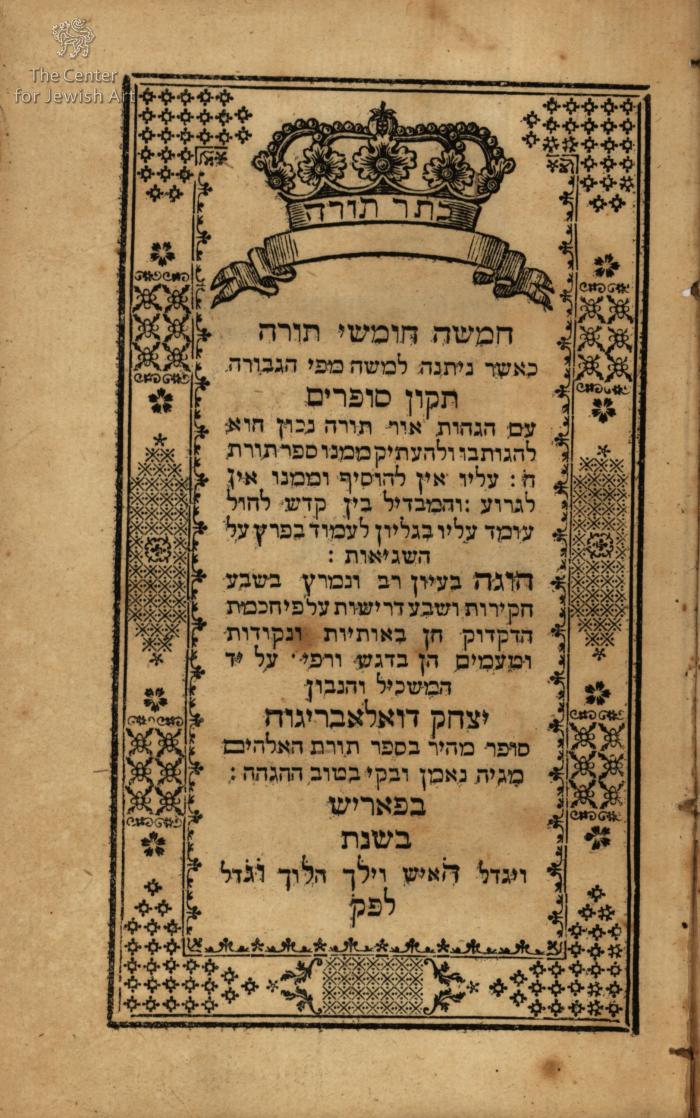Obj. ID: 37103 Chamishah Chumshei Torah, Paris, 1809

sub-set tree:
This text was prepared by William Gross:
Chamishah Chumshei TorahTikun Sophrim with Nikud. Title page topped by large crown inscribed “Keter Torah”, and surrounded on three sides with typographical border. Divisional titles each within a typographical border. Woodcut head- and tail pieces, cf. a narrow decorative panel with a harp and foliage.
The first books containing Hebrew type issued in Paris were printed by A. Gourmont from 1508; and other works were printed during the next half-century. Robert Stephanus produced particularly beautiful Bibles between 1539 and 1556. Hebrew printing was resumed in 1620 by S. Cramoisy. When Louis XIII established a printing press in 1640, it had a Hebrew department of which, however, little use was subsequently made. Under Napoleon I the printer Setier issued some liturgical items. From the middle of the 19th century until the present day the firm of E. Durlacher, the first Jewish printer in Paris, printed mainly liturgies. The printer of this book, Levy, was apparently his contemporary.



















